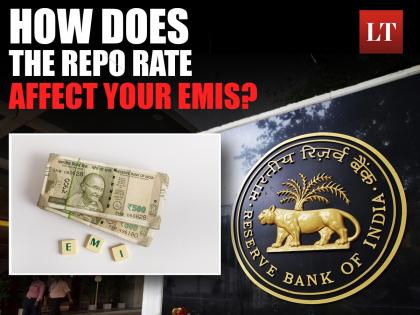RBI Repo Rate: What is This ‘Repo Rate’ Everyone’s Talking About? And Why Does Your EMI Go Up Because of It?
By Lokmat Times Desk | Updated: August 6, 2025 11:37 IST2025-08-06T11:37:00+5:302025-08-06T11:37:08+5:30
The Reserve Bank of India (RBI) conducted its Monetary Policy Committee meeting today and decided to keep the repo ...

RBI Repo Rate: What is This ‘Repo Rate’ Everyone’s Talking About? And Why Does Your EMI Go Up Because of It?
The Reserve Bank of India (RBI) conducted its Monetary Policy Committee meeting today and decided to keep the repo rate unchanged at 5.50%. RBI Governor Sanjay Malhotra announced that there will be no revision in the repo rate, which means loan EMIs for borrowers are expected to stay the same for now. While the decision might not bring immediate relief, it highlights a recurring term in financial discussions—“repo rate.” For many, it's still a confusing concept. So, what exactly is the repo rate? And more importantly, how does it affect your monthly EMI and your household finances? Let’s break it down.
What Is Repo Rate and Why Should You Care?
Just like individuals borrow money from banks, banks also borrow money, especially when they fall short on funds. But instead of going to another bank, they borrow from the Reserve Bank of India. The interest rate at which the RBI lends money to commercial banks is called the repo rate. When the repo rate increases, it becomes more expensive for banks to borrow. As a result, banks increase their loan interest rates to balance their costs. This means your EMIs on home loans, car loans, and personal loans also increase, putting extra pressure on your monthly budget.
Why Does RBI Change the Repo Rate?
The repo rate isn’t just a random number — it’s one of the most important tools the RBI uses to control inflation and regulate economic growth. When inflation is rising too fast, the RBI hikes the repo rate to make borrowing expensive and reduce the money circulating in the economy. This helps bring prices down. Conversely, when the economy slows down and spending needs a boost, the RBI cuts the repo rate, making loans cheaper to encourage people and businesses to borrow and invest. In short, the repo rate is a balancing lever between economic growth and inflation control.
Also Read: Questions Parents Should Never Ask Teachers in Front of Their Children During PTMs
How Does It Affect Your EMI and Loan Costs?
The repo rate acts as a benchmark for lending rates across the banking sector. When the RBI raises or lowers this rate, commercial banks adjust their own lending rates accordingly. If the repo rate increases, banks hike interest rates on loans, which directly raises your EMIs. That’s why every repo rate hike means more money out of your pocket. On the flip side, if the RBI reduces the repo rate, banks are expected to lower interest rates, and your EMIs can become lighter. So, if you have any loans - especially home loans - the repo rate decision is something you should definitely care about.
What’s the Situation Right Now?
For now, the RBI has kept the repo rate unchanged at 5.50%, offering no immediate relief to loan borrowers. This means your current EMI stays the same, unless your bank independently decides to make a change. While this may seem uneventful, the repo rate is a signal for what could come in the near future. Keeping a close eye on it can help you plan your finances better. Whether you’re considering a new loan or managing an existing one, understanding the repo rate helps you anticipate financial impacts and stay a step ahead in your budgeting game.